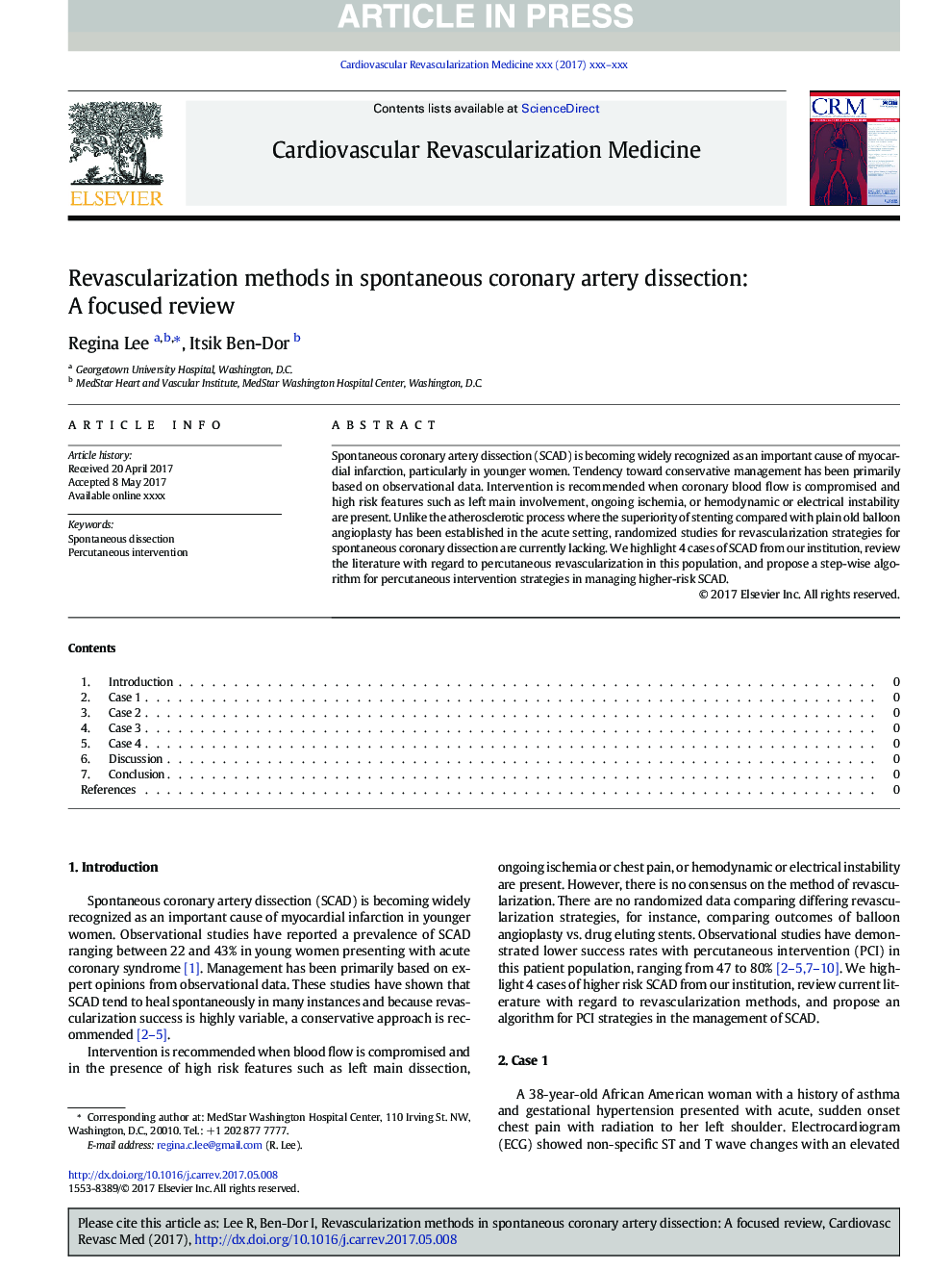| Article ID | Journal | Published Year | Pages | File Type |
|---|---|---|---|---|
| 5592648 | Cardiovascular Revascularization Medicine | 2017 | 5 Pages |
Abstract
Spontaneous coronary artery dissection (SCAD) is becoming widely recognized as an important cause of myocardial infarction, particularly in younger women. Tendency toward conservative management has been primarily based on observational data. Intervention is recommended when coronary blood flow is compromised and high risk features such as left main involvement, ongoing ischemia, or hemodynamic or electrical instability are present. Unlike the atherosclerotic process where the superiority of stenting compared with plain old balloon angioplasty has been established in the acute setting, randomized studies for revascularization strategies for spontaneous coronary dissection are currently lacking. We highlight 4 cases of SCAD from our institution, review the literature with regard to percutaneous revascularization in this population, and propose a step-wise algorithm for percutaneous intervention strategies in managing higher-risk SCAD.
Related Topics
Life Sciences
Biochemistry, Genetics and Molecular Biology
Molecular Medicine
Authors
Regina Lee, Itsik Ben-Dor,
